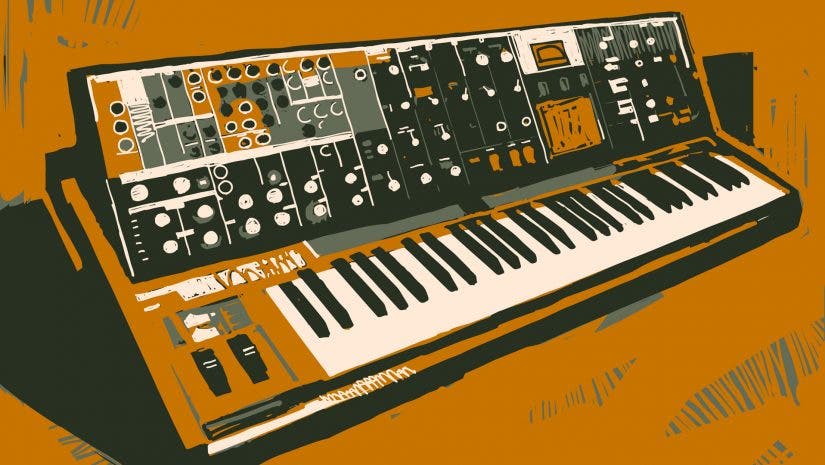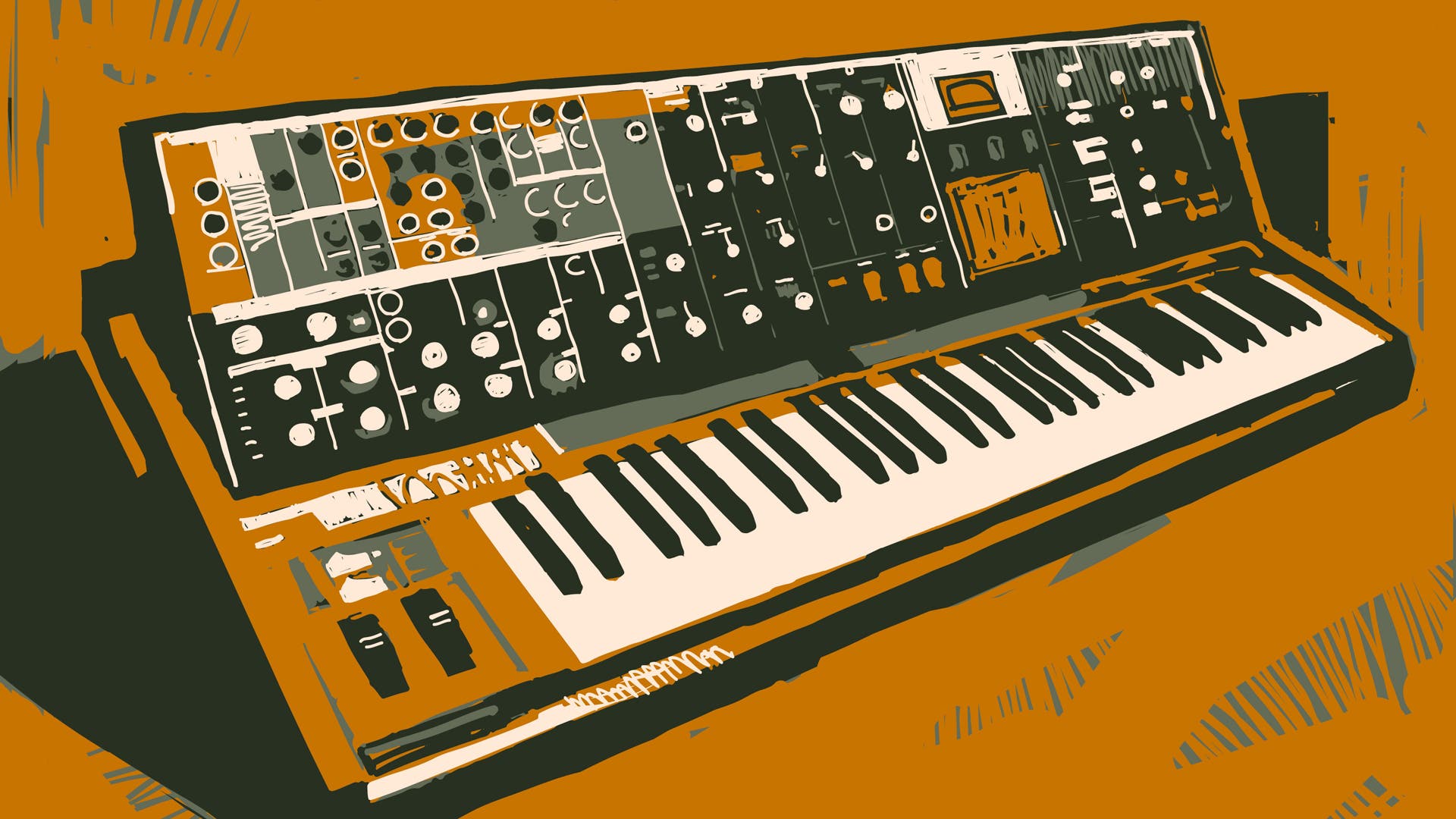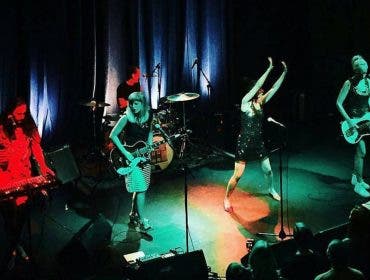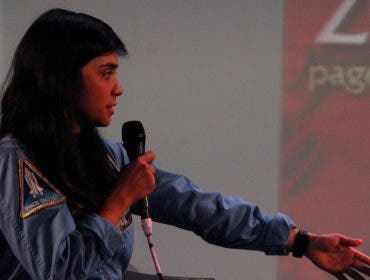Electronic music has long been beholden to a handful of legendary scientific women — most of them inventors, music composers, and punctilious sound engineers. This ubiquitous music we take for granted today — ambient, house, disco, electro, trance and all the subgenres within — had to begin somewhere, and these pioneering women were there twisting knobs and exploding electrical currents at the forefront. Thanks to the advent of digital audio in the 80‘s, which then birthed into affordable consumer synthesizers, instruments could be put into girls’ hands everywhere thereafter. Here are just a few of the experimental heroes, and documentaries that cover them (Sisters With Transistors, included), that we should know about:
Bebe Barron
Visionaries Bebe Barron (1925 – 2008) and her husband Louis created the world’s first all-electronic score to a commercial film long before the term “sci-fi sound effects” was even a household blip or bleep. The soundtrack for Forbidden Planet from 1956 is the result of looped tape recorders, ring modulators, electronic oscillators, spring reverberators, and a small Manhattan apartment full of hand made electroacoustic instruments.
“I don’t know how we functioned under that much freedom…I really don’t. There were no rules and no history of electronic music up to that point,” Bebe said in an interview in 1997. Throughout the 1950’s and 60’s, she continued composing for experimental cinema and art films, sliced tape with John Cage, and is considered one of the most influential people in film soundtrack history.
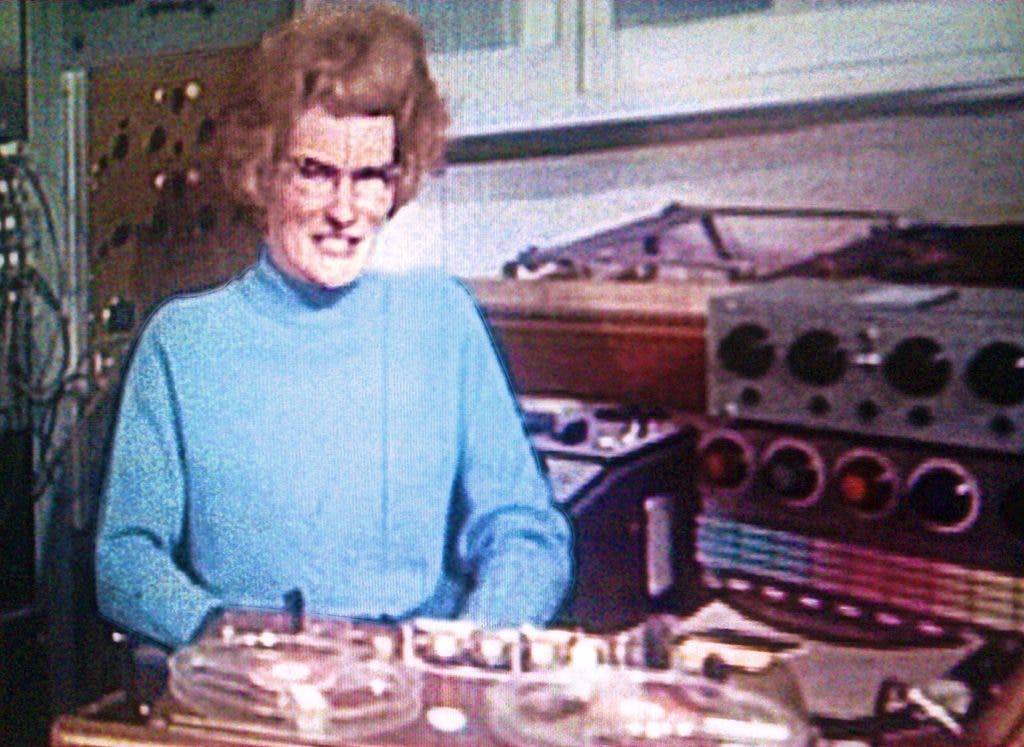
Daphne Oram
Perhaps the legendary Daphne Oram (1925 – 2003) should be called the godmother of British electronic music. She began her career as the first sound engineer and director of the BBC’s Radiophonic Workshops in 1958, a time when electronic music was just in its infancy. She invented a form of sound synthesis suitably called “Oramics,” a method of music composition that feeds an alphabet of symbols on paper through a machine that would then synthesize them into sounds on electronic tape. Because of this, she’s considered the first woman to design and construct an electronic musical instrument.
Oram’s style has been described as early noise-music, minimalism, abstract, and a precursor to modern ambient drone. “In my work, I am not concerned with synthesizing orchestral sounds — we have excellent orchestras for making those sounds. My interest is in making new sounds which are musical.“
![By Clive Blackburn [CC BY 3.0 (http://creativecommons.org/licenses/by/3.0)], via Wikimedia Commons](https://www.adorama.com/alc/wp-content/uploads/2016/10/Delia_Derbyshire_años_70.jpg)
Delia Derbyshire
Electronic music pioneer Delia Derbyshire (1937- 2001) may be best known for creating the theme to Dr. Who in 1963, a BBC show still being aired with brilliant contemporary twists today. This memorable siren-whoosh-whirr-eeee melody became the first electronic score on a television show. Involving zero musicians, she created every part meticulously on quarter inch mono tape using techniques such as filtered white noise generators, manually adjusted signal oscillators, and a machine she liked to call the “wobbulator.” (The siren sound is not a theramin, as widely believed!)
Also with beginnings at the BBC’s Radiophonic Workshop, Delia went on to continue composing electronic music for radio, and soundtracks for hundreds of avant-garde films, documentaries, and television performances. Her seminal library of sounds paved the way for collaborations with early sonic dabblers such as rock musicians Pink Floyd, Yoko Ono, Brian Jones, and The Beatles.
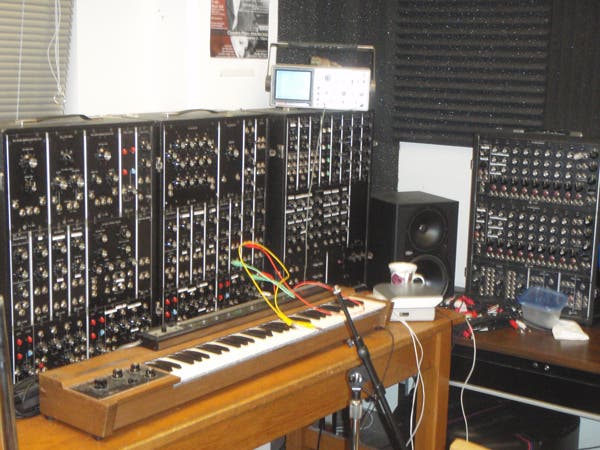
Wendy Carlos
Wendy Carlos (born Walter in 1939) composed several electronic scores on an early Moog synthesizer. She’s most famously know for her original soundtracks to high-budget cult films like A Clockwork Orange, The Shining, and Tron. Her early album Switched-On Bach, released in 1969, became the first classical album in history to go platinum. Audiences loved the bizarre but prodigious performances of Bach’s masterpieces reinterpreted in that otherworldly Moog synthesizer sound, feeling as if she was introducing the world to the “music of the future.”
Wendy, born Walter, revealed herself as transgender in 1979, one of the first public figures to do so. Her theatrical style and use of new musical equipment was important in introducing electronic music to the rock and punk musicians of 1970’s and 80’s — from prog rock to new wave — for better or worse. “I think music is an art form that is well served by having some drama within it,” she said in an interview from 2003.
And today…
If was difficult to narrow this piece down just four pioneering women to represent the beginning of electronic music production. There were numerous innovators in the field, and presumably many more women we don’t know about. A great website like Female Pressure lists hundreds of modern women producers to draw inspiration from, and also includes gear specs, images, inspiring stories, and the introduction of new electronic genres to many readers, from legends like Pauline Oliveros, Elaine Radigue, and Laurie Spiegal to newcomers like Pharmakon, Mikachu, and Maya Jane Coles… Add to the list!
Plus: Check Out Sisters With Transistors
“Sisters With Transistors,” the 2020 documentary directed by filmmaker Lisa Rovner, follows the story of electronic music’s women trailblazers. Creatively made up of archival film footage and audio/video snippets, the documentary captures women electronic music stars such as Clara Rockmore, the theremin virtuoso; Suzanne Ciani, master of the Buchla synthesizer; Eliane Radigue, ARP synthesizer composer; and electronic film-score legend Bebe Baron. We also glimpse the works of artists and audio engineers Daphne Oram, Pauline Oliveros, Delia Derbyshire, Maryanne Amacher, and Laurie Spiegel. Narrated by Laurie Anderson, this film is a vital historical corrective, inscribing women electronic music names into history as innovators and pioneers.
The women interviewed in “Sisters With Transistors” discuss the first synthesizers, sequencers, tone generators, and analog instruments. Throughout the film, we learn how early 20th-century technology and machinery opened music to an entirely new field of sound. Several women had access to wartime technology advancements and proto-computers. We learn that these women engineers developed a new form of electronic music, forging ahead without any role models or representations of women electronic music composers.
The film maps a new history of electronic music through the visionary people whose radical experimentations redefined the boundaries of 20th-century music. Electronic music not only changed the modes of production but also transformed the very terms of musical thought in its worldwide influence. Ultimately, “Sisters With Transistors” follows women’s electronic music lineage, which has utterly transformed how we produce and listen to music today.
